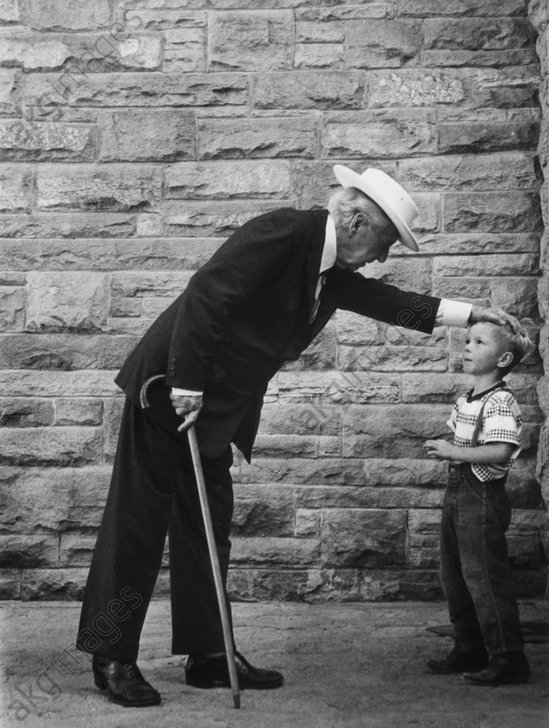“If the eye sees it, take it.”

In a photograph, a young man stands on the beach at Termoli. It’s not long after the end of the Second World War and the beaches have just reopened to the public. Other Italian locals in swimwear stroll along the sand past the young man who stares out at the Adriatic. He dominates the print; his head and foot graze the top and bottom borders of the image. When developing the print the photographer has decided to foreground the man even further by dodging the area around his body, highlighting him and making his swimming trunks appear incredibly white.

The photographer is Michelangelo Celestino Onofrio, or Tony, Vaccaro. Tony was born in Greensburg, Pennsylvania to an Italian-American family originally from Bonefro in Molise, southern Italy. Aged 18, Tony was drafted into the army and fought as an infantryman in the 83rd Infantry Division of the US Army, entering Germany in December 1944. With his 35mm Argus C-3 camera by his side, Tony photographed his experiences as a soldier and, following the Nazi surrender, the immediate aftermath of the war in Germany and the slow rebuilding of the country.

Before returning to New York in 1950, Tony spent much of his time photographing in and around the family home in Bonefro, which is where he took the photograph of the young man on the beach. I first met Tony in October 2009. My colleague Ute and I were in Manhattan for the Visual Connections trade fair and the PACA Conference and we took the opportunity to visit Tony at his home in Long Island City. We had a wonderful time talking with Tony, he was and is an incredible storyteller, plus he took us to his favourite local restaurant where we had some knockout Italian food, better than anything I had eaten before or since!

Before we left New York, Tony kindly came to see us in Manhattan. We met at the Bus Stop Café in the West Village, near to where we were staying, and – of course – Tony knew the café already, he had lived near there in his younger days. We had breakfast huddled around a small table where Tony presented us each with a print of our choosing and signed them for us. That print now lives, framed and carefully placed out of direct sunlight, on the wall of my bedroom, a daily reminder of a great trip and an extraordinary photographer.
Tony’s bravery as a soldier and achievements as a war photographer have been recognised in books and documentaries. He has also been awarded many medals, including the Légion d’honneur, and commemorated the 70th anniversary of the D-Day landings alongside US Secretary of State John Kerry in the French town of Saint-Briac-sur-Mer.

In January this year, Tony was in Paris, having just been decorated by the Italian government, and visited the akg offices there. Given that I was only a Eurostar journey away in London, I made sure that I got to see Tony again – it had certainly been too long since visiting him in New York! Now 92, Tony still has the ability to tell a great story, and drop a few big names: this is a man who has photographed Sophia Loren, Picasso and JFK, after all! In this photograph I took of him at our Paris offices, Tony is telling a rapt audience how he helped to teach the young Grace Kelly, right at the start of her career, how to pose for the best photo possible.

In this anniversary year of the end of the Second World War, we have quite rightly focussed a lot on Vaccaro’s photography of war. He was not an official war photographer, the images he took he took alongside his duties as a soldier, and he developed his film in his helmet at night. However, Vaccaro’s professional career as a commercial photographer for magazines like Life and Look is equally fascinating, so we have selected some of our favourite images from Tony’s immense work that focus on his peacetime photography. We hope you enjoy them as much as we do. Grazie, Tony!

More on Tony Vaccaro on the akg-images website:
The Second World War and the reconstruction of Germany
Tony Vaccaro’s peacetime photography